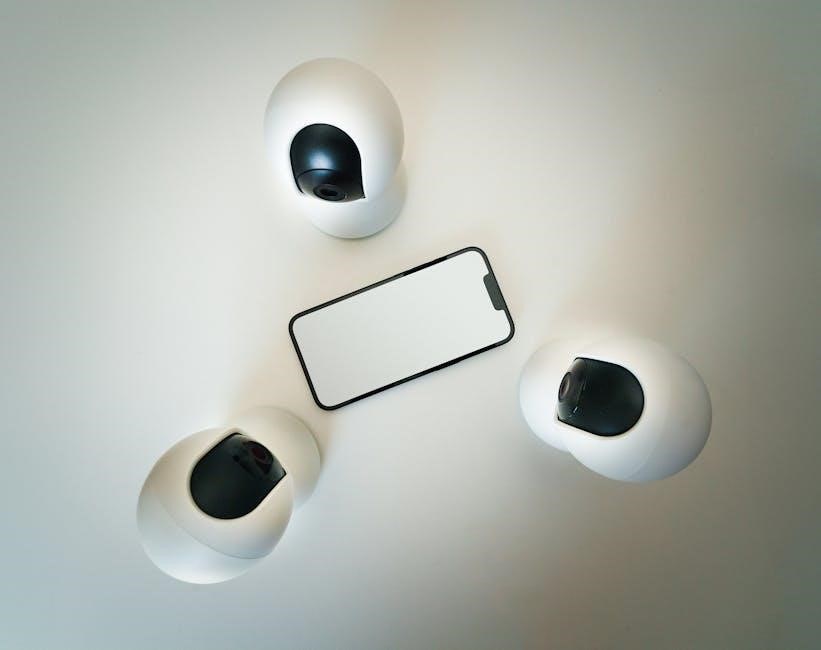The Early Childhood Environment Rating Scale (ECERS) is a widely used tool for assessing the quality of preschool environments, providing a comprehensive evaluation of educational settings.
ECERS is a 43-item observational tool assessing the quality of early childhood environments. It evaluates space, furnishings, materials, and interactions, using a 1-7 scale. Key areas include learning activities, personal care, and social interactions, providing a comprehensive framework for improving educational settings.
ECERS plays a vital role in enhancing early childhood education by providing a standardized method to assess and improve the quality of learning environments. It helps identify areas needing improvement, ensuring children receive optimal support for their cognitive, social, and emotional development.
ECERS was created by Thelma Harms, Richard Clifford, and Debby Cryer, first published in 1985. It was revised in 1998 as ECERS-R, enhancing its reliability and scope.
ECERS was developed by Thelma Harms, Richard Clifford, and Debby Cryer, first published in 1985. The revised version, ECERS-R, emerged in 1998, incorporating feedback and enhancing reliability. Cross-cultural validation has expanded its use globally, with adaptations like the Russian version by ДA Бухаленкова in 2022, ensuring its relevance worldwide.
The ECERS assesses early childhood environments through key domains like space, materials, and interactions, providing a comprehensive evaluation framework for educational quality improvement.
The ECERS evaluates early childhood environments through key domains such as space, materials, and interactions, each broken down into specific subscales. These subscales assess factors like the availability of learning materials, the quality of teacher-child interactions, and the organization of activities, providing a comprehensive framework to evaluate and enhance educational quality in preschool settings effectively.
ECERS is widely applied in educational settings to assess and improve the quality of early childhood environments, focusing on key areas such as movement and interaction.
ECERS implementation involves observational assessments of classroom environments, focusing on subscales like movement and interaction. Trained evaluators use standardized techniques to rate educational quality, ensuring reliable and consistent evaluations, and guiding improvements in early childhood settings effectively.
ECERS enhances early childhood education quality by providing clear guidelines, informing policy decisions, and aligning with classroom assessment systems to improve learning environments effectively.
ECERS offers educators actionable insights to enhance classroom environments and teaching practices, while policymakers benefit from data-driven decisions to allocate resources and set standards, ensuring high-quality education for young children across diverse settings effectively.
ECERS assessments can be time-intensive, requiring trained observers, and may not fully capture diverse cultural or contextual factors in early childhood education settings globally.
ECERS has been criticized for its complexity and limited cultural adaptability. Some argue it may not fully capture diverse educational practices or provide actionable feedback for improvement, highlighting the need for more streamlined assessments and culturally sensitive evaluations in early childhood education settings.
ECERS has been applied in various preschool classrooms to assess educational quality. A study involving 28 classrooms reported an average score of 3.35, demonstrating its effectiveness in evaluating early childhood environments and informing improvements.
ECERS-R has been successfully applied in assessing early childhood environments. A study involving 28 classrooms reported an average score of 3.35, demonstrating its effectiveness in evaluating educational quality. The alignment with scales like MOVERS highlights the importance of curriculum and observational tools. These findings underscore the role of ECERS in identifying strengths and areas for improvement, fostering enhanced educational settings.
ECERS will integrate emerging technologies, enhance observational accuracy, and inform policy reforms, shaping future educational standards and practices effectively.
ECERS is evolving with technology, incorporating digital tools for real-time data collection and analysis. Innovations include personalized learning assessments and culturally sensitive practices, ensuring inclusive education. These advancements aim to enhance observational accuracy and inform future policy reforms, promoting higher-quality educational environments globally.
ECERS remains a vital tool for enhancing early childhood education quality, guiding educators and policymakers in creating supportive learning environments that foster child development and long-term success.
ECERS provides a comprehensive framework for evaluating early childhood environments, emphasizing quality, educational practices, and child engagement. Its widespread adoption underscores its effectiveness in guiding educators and policymakers toward creating supportive settings that promote holistic development. Future applications and continuous refinement will further enhance its impact on early education systems worldwide.
Harms, T., Clifford, R. M., & Cryer, D. (1998). Early Childhood Environment Rating Scale-Revised (ECERS-R). Teachers College Press. Pianta, R. C., & La Paro, K. M. (2008); CLASS, and related tools. For further reading, explore these seminal works.
Primary sources include Harms, T., Clifford, R. M., & Cryer, D. (1998), Early Childhood Environment Rating Scale-Revised (ECERS-R), Teachers College Press. Additional references: Pianta, R. C., & La Paro, K. M. (2008), CLASS, and related tools for early childhood assessment.
The Early Childhood Environment Rating Scale (ECERS) is a tool for assessing the quality of early childhood education environments, focusing on classroom interactions and learning materials.
Overview of ECERS
The Early Childhood Environment Rating Scale (ECERS) is a widely used observational tool to assess the quality of early childhood education environments. It evaluates classroom interactions, learning materials, and educational activities, providing a comprehensive framework for improving instructional settings.
Importance of ECERS in Early Childhood Education
The Early Childhood Environment Rating Scale (ECERS) is a vital tool for evaluating and enhancing the quality of early childhood education settings. It provides a structured framework for assessing classroom environments, supporting teacher practices, and fostering optimal developmental outcomes for young children effectively.
Origins and Development of ECERS
The Early Childhood Environment Rating Scale (ECERS) was developed by Thelma Harms, Richard Clifford, and Olema Cryer in 1998 to evaluate the quality of early childhood environments.
History and Creation of the Scale
The ECERS was developed by Thelma Harms, Richard Clifford, and Olema Cryer in 1998 to assess the quality of early childhood environments, focusing on key areas like space, materials, and interactions.

Structure and Components of ECERS
ECERS assesses early childhood environments through 43 items, focusing on key domains like space, materials, and interactions, with a 1-7 scoring system.
Key Domains and Subscales
ECERS-R includes 43 items across seven domains: Space and Furnishings, Personal Care Routines, Language-Reasoning, Literacy, Mathematics, Science-Logic, and Social-Emotional Provision. Each domain is scored on a 1-7 scale, evaluating the quality of the environment and teacher-child interactions to support learning and development.

Application of ECERS in Educational Settings
ECERS is used in educational settings to assess and enhance the quality of early childhood environments. It helps educators evaluate classrooms and improve learning experiences for young children.
Implementation and Observation Techniques
ECERS implementation involves structured observations of classroom environments, focusing on physical and social elements. Observers assess quality over multiple visits, ensuring reliability. The tool provides actionable insights to enhance educational settings and support young learners’ development effectively.

Advantages of Using ECERS
ECERS provides a comprehensive framework for evaluating and improving early childhood educational environments, supporting the development of high-quality programs and informed policy decisions in education.
Benefits for Educators and Policymakers
ECERS provides educators with actionable insights to enhance classroom environments and improve teaching practices. For policymakers, it offers a reliable tool to assess program quality, inform decisions, and allocate resources effectively, ensuring equitable and high-quality early childhood education for all children.
Challenges and Limitations of ECERS
The ECERS scale’s complexity and reliance on trained observers can limit its accessibility. High standards may also pose challenges for settings with limited resources or expertise.
Common Criticisms and Areas for Improvement
The ECERS scale has faced criticism for its complexity and subjective nature, requiring highly trained evaluators. Some argue it may not fully capture cultural or contextual variations in educational settings. Additionally, there are calls for more detailed scoring criteria to enhance reliability and consistency across different environments.
Improvements could include expanding the scale to better address outdoor learning spaces and digital literacy. There is also a need for more frequent updates to reflect evolving educational standards and practices, ensuring the tool remains relevant and effective in diverse settings globally.
Case Studies and Real-World Applications
ECERS has been successfully applied in various preschool settings to assess and improve educational quality. Real-world applications highlight its effectiveness in identifying areas for improvement and guiding professional development.
Success Stories and Lessons Learned
ECERS has successfully enhanced early childhood environments by identifying quality improvements. Studies show positive outcomes in curriculum alignment and teacher-child interactions. Lessons learned emphasize the importance of professional development and targeted interventions for sustained growth.

Future Implications of ECERS in Education
ECERS will continue shaping early childhood education by refining quality standards, adapting to emerging trends, and influencing policy to foster improved learning environments for young children;
Emerging Trends and Innovations
ECERS is evolving with advancements in technology, offering digital tools for real-time assessments and data-driven insights. Integrating diverse cultural perspectives and sustainability practices are becoming key focuses, ensuring the scale remains relevant and effective in global early childhood education contexts.
ECERS remains a vital tool for enhancing early childhood education quality, offering insights that guide improvements and foster nurturing environments for young learners, ensuring their optimal development and future success.
The ECERS provides a comprehensive framework for assessing early childhood environments, emphasizing quality improvement. Its structured approach ensures educators and policymakers can create nurturing spaces that promote learning and development, making it an indispensable tool in early education.
References and Further Reading
Key sources include Harms et al. (1998) for the ECERS-R, Mashburn and Pianta (2006) for related research, and Teachers College Press for the revised edition.
Key Sources and Citations
Key sources include Harms et al. (1998) for the ECERS-R, Mashburn and Pianta (2006) for related research, and Teachers College Press for the revised edition. Adaptations by Бухаленкова (2022) and Юдина (2017) provide insights into its application. The scale is widely used for assessing educational quality in preschool settings, covering key domains like curriculum and environment. ECERS-R is published by Teachers College Press, New York.



























































